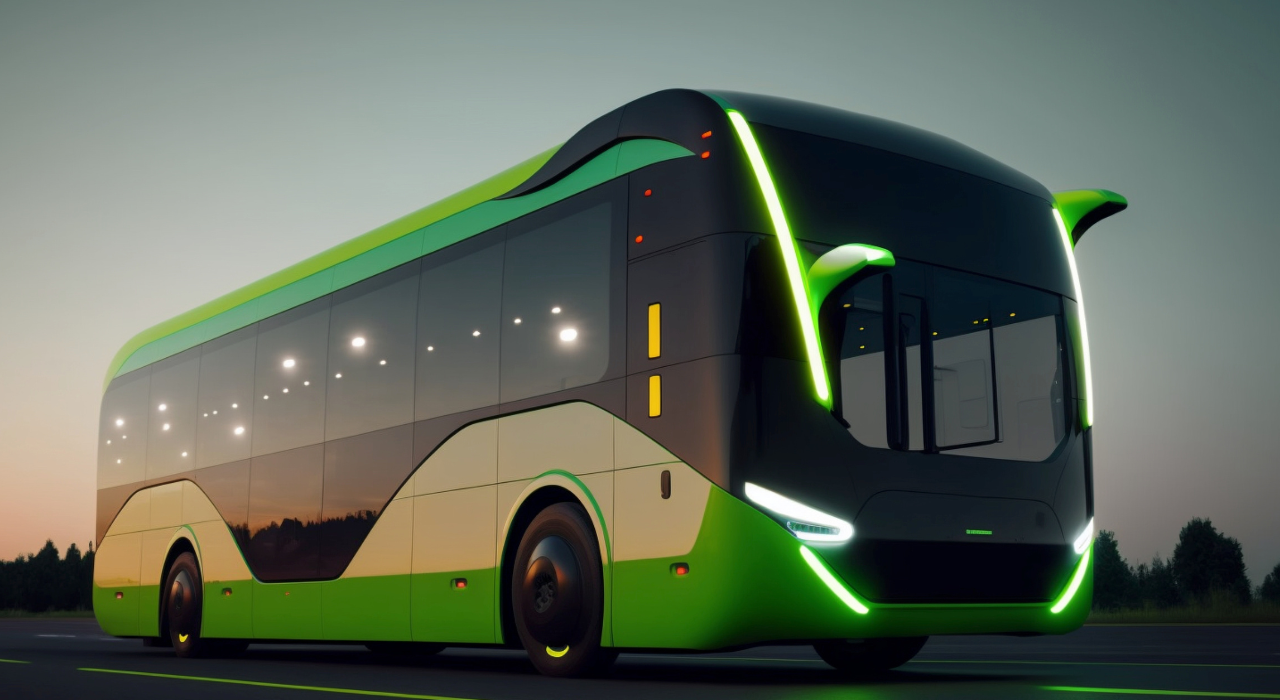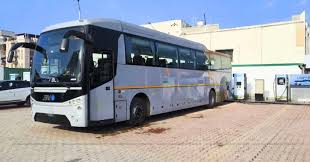The electric bus is emerging as a revolutionary solution for sustainable urban transportation. As cities across the globe aim to reduce pollution and promote clean energy, electric buses have gained significant attention. Offering a quiet, zero-emission alternative to traditional diesel buses, they play a vital role in reducing carbon footprints and enhancing the quality of life in urban areas.
This blog dives into the technology, benefits, challenges, and future potential of electric buses, demonstrating their transformative impact on public transit systems worldwide.
What Is an Electric Bus?
An electric bus is a public transportation vehicle powered entirely by electricity, typically stored in onboard batteries. Unlike conventional buses that rely on diesel or petrol, electric buses produce no tailpipe emissions, making them an eco-friendly alternative.
Key components of an electric bus:
- Battery Pack: Stores the electricity needed for propulsion.
- Electric Motor: Converts electrical energy into mechanical energy.
- Charging System: Replenishes the battery through chargers or overhead systems.
Types of Electric Buses
Electric buses come in various forms, catering to different operational needs:
- Battery Electric Buses (BEBs)
- Operate solely on battery power.
- Require charging infrastructure at depots or stops.
- Plug-In Hybrid Electric Buses (PHEBs)
- Combine battery power with a conventional engine.
- Offer greater range flexibility.
- Trolleybuses
- Draw power from overhead wires.
- Common in cities with established electric grid systems.
- Fuel Cell Electric Buses (FCEBs)
- Use hydrogen fuel cells to generate electricity.
- Emit only water vapor as a byproduct.
Benefits of Electric Buses
Electric buses bring a myriad of benefits to cities, communities, and the environment:
Environmental Benefits
- Zero tailpipe emissions, reducing air pollution.
- Lower greenhouse gas emissions compared to diesel buses.
- Quiet operation, minimizing noise pollution in urban areas.
Economic Advantages
- Lower operating costs due to reduced fuel expenses.
- Require less maintenance because of fewer moving parts.
- Long-term savings despite higher upfront costs.
Social Impact
- Improve public health by reducing exposure to air pollutants.
- Enhance the commuting experience with smooth, quiet rides.
How Electric Buses Work
Electric buses are powered by advanced battery technology and electric motors.
- Energy Storage
- Lithium-ion batteries are the most commonly used due to their high energy density and longevity.
- Power Conversion
- The electric motor converts stored energy into mechanical power to move the bus.
- Regenerative Braking
- Captures energy lost during braking and uses it to recharge the battery.
- Charging Methods
- Dependent on the type of charger:
- Slow Charging: Ideal for overnight charging.
- Fast Charging: Used during transit stops.
- Dependent on the type of charger:
Electric Bus Technology: Key Innovations
Electric bus technology is constantly evolving, driven by innovation and demand:
- Extended Battery Life: Modern batteries offer greater mileage and faster charging times.
- Wireless Charging: Allows buses to charge while in motion or at stops without plugging in.
- Vehicle-to-Grid (V2G) Technology: Enables buses to return unused energy to the grid.
- Advanced Telematics: Provides real-time data on battery health, location, and efficiency.
Challenges in Electric Bus Adoption
Despite their numerous benefits, electric buses face some challenges:
High Initial Costs
- Electric buses are more expensive than traditional ones due to advanced batteries and components.
Charging Infrastructure
- Requires significant investment to establish widespread and reliable charging stations.
Range Limitations
- Battery capacities may limit the operational range, affecting route planning.
Battery Disposal
- Proper recycling or disposal of batteries is essential to avoid environmental harm.
Government Initiatives Supporting Electric Buses
Governments worldwide are implementing policies to accelerate the adoption of electric buses:
- Subsidies and Incentives: Financial support for purchasing electric buses and setting up charging infrastructure.
- Emission Regulations: Stricter norms to phase out diesel buses and promote cleaner alternatives.
- Green Urban Planning: Integrating electric buses into smart city projects.
In India, the Faster Adoption and Manufacturing of Hybrid and Electric Vehicles (FAME) scheme has been instrumental in promoting electric buses.
Global Adoption of Electric Buses
Electric buses are transforming public transport systems across the globe:
- China: Leads the market with over 400,000 electric buses in operation.
- Europe: Cities like Amsterdam and Oslo aim for 100% electric bus fleets by 2030.
- United States: Increasing investment in electric buses as part of green infrastructure plans.
- India: Rapid adoption in cities like Mumbai, Delhi, and Bengaluru to combat pollution.
Sustainability and Electric Buses
Electric buses contribute significantly to achieving sustainability goals:
- Reduced Carbon Footprints: Help cities meet emission reduction targets.
- Energy Efficiency: Maximize energy usage with advanced technologies.
- Renewable Energy Integration: Pairing electric buses with renewable energy sources amplifies their environmental benefits.
The Future of Electric Buses
The electric bus industry is poised for remarkable growth in the coming years:
- Battery Advancements
- Research into solid-state batteries promises greater range and faster charging.
- Autonomous Electric Buses
- Combining autonomous driving technology with electric power for enhanced efficiency.
- Global Expansion
- Increasing adoption in emerging markets driven by affordability and infrastructure development.
- Collaborative Ecosystems
- Partnerships between governments, manufacturers, and energy providers to streamline adoption.
Why Electric Buses Are the Future
Electric buses are not just a trend but a necessity in the fight against climate change and urban pollution.
- Offer a scalable solution for sustainable public transportation.
- Help cities transition towards carbon-neutral futures.
- Represent a significant step in the global shift to electric mobility.
Conclusion
Electric buses are revolutionizing public transportation by offering an eco-friendly, cost-effective, and efficient alternative to traditional diesel-powered vehicles. While challenges like high costs and infrastructure limitations exist, ongoing technological advancements and government support are paving the way for their widespread adoption.
As cities continue to grow and environmental concerns intensify, electric buses stand out as a beacon of sustainable urban mobility, shaping a cleaner, greener future for generations to come.
Stay tuned for more updates on the electric bus revolution and its impact on global transportation systems.







